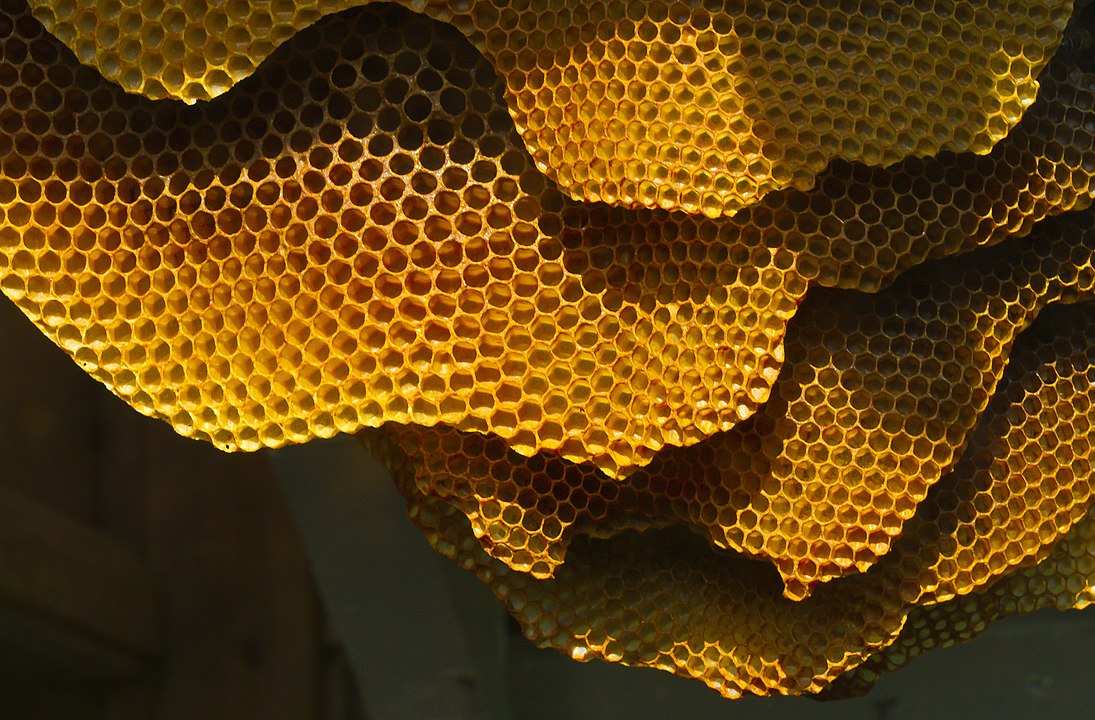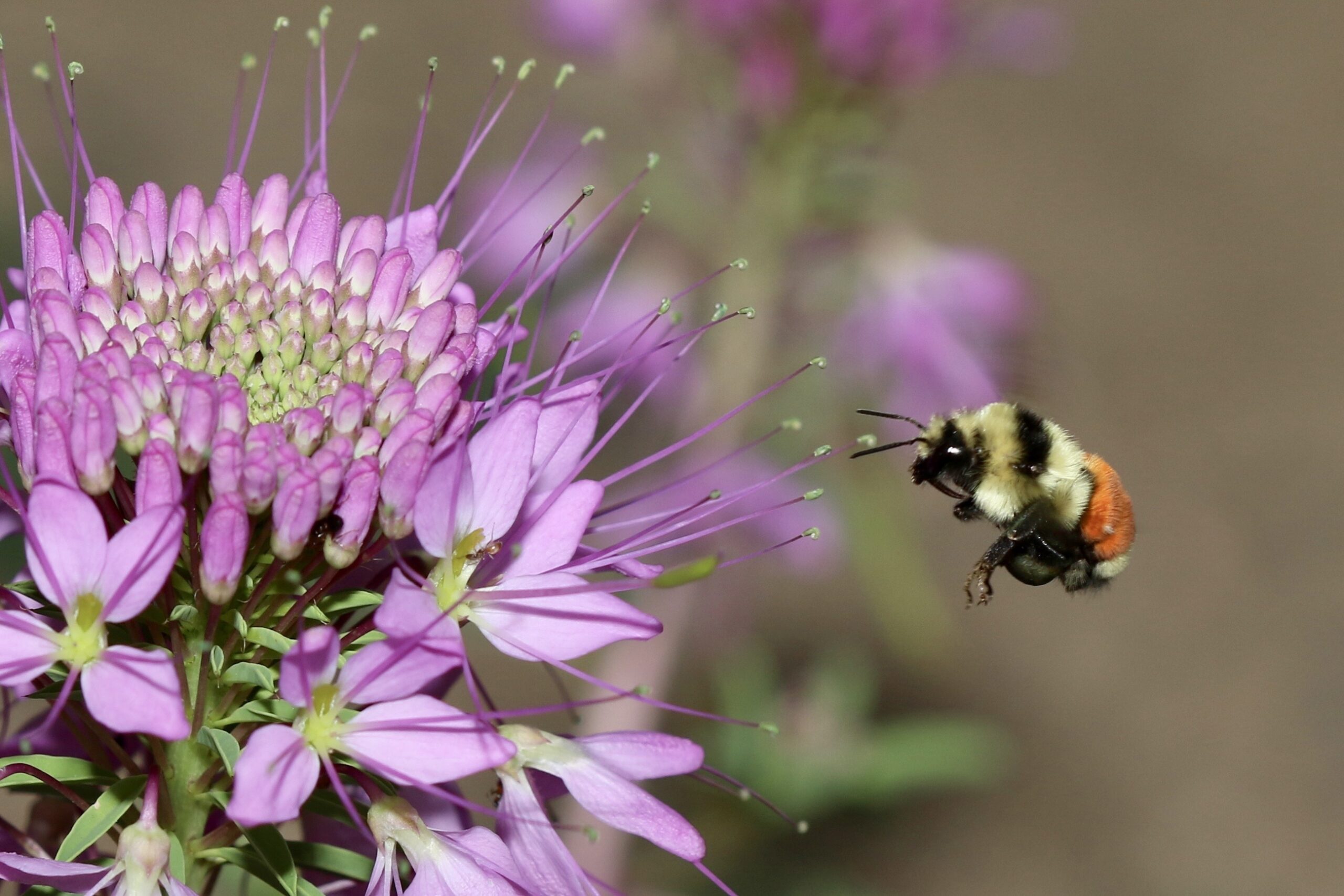A guest post by Devin O’Brien
Honey is, of course, produced by honeybees (genus Apis). These insects forage throughout the day, visiting flowers and collecting nectar (sugary liquid produced by flowers to attract pollinators). They later return to their hives and deposit this nectar in waxy honeycombs, where their hive-mates fan the liquid with their wings to evaporate excess water. This process condenses the sugar and transforms the nectar into honey, which is then stored for future periods of famine when fresh nectar may be scarce. This process of “forage and storage” began with very first honeybees and went undisturbed for nearly 14 million years. About 10,000 years ago, however, humans discovered that honeybees produce far more honey than is necessary to maintain a hive and that honey can be safely harvested from beehives when they are properly cared for. It was upon this discovery that the first beekeepers were born.

Our first record of organized beekeeping (also known as apiculture) dates back to ancient Egypt, circa 3,500 BCE. There, honey was commonly used by all classes of people, suggesting that Egyptians mastered beekeeping on a very large scale. Indeed, records indicate the Egyptians constructed elaborate systems for honey production, including specialized rafts for moving beehives along the River Nile to maintain close proximity to seasonal, flowering plants. It comes as little surprise then that Egyptians found a large number of practical applications for honey. Citizens used the liquid as a sweetener in food, while doctors capitalized on the natural antibiotic properties of honey to produce salves for healing wounds. Even the mummified benefited from Egypt’s expert use of honey, as many of their sarcophagi were sealed with wax collected from honey producing hives and full honeypots were typically offed to the dead as food during the afterlife. Believe it or not, some mummies were even embalmed in the golden liquid to improve preservation of the body!
Overall, honey was a valuable resource in ancient Egypt. It served a large number of diverse purposes and, through this, was an essential part of everyday life. Yet, while the ancient Egyptians were the first to master honey production on a large scale, they were not the first capitalize on the hard work of honeybees. This title goes to the ancient people of Spain, who were robbing beehives almost 5,000 years before the Egyptians were slathering their mummies in honey. In the early 1920’s, cave paintings were discovered in the Cuevas de la Araña of Valencia, Spain that clearly depict a human figure collecting honey directly form a hive (Fig. 1). This figure, now called the “Man of Bicorp”, appears to be climbing vines and fighting off of angry bees to collect what may be our species’ first taste of honey (worth it). This may not have been beekeeping on the scale of the Egyptians, but it was certainty a monumental point in the history of apiculture.

I think the history of humans and honey is absolutely fascinating. As a history nerd, bug nerd, and lover of honey, the topic checks all my boxes. But there is so much more to the history of honey than the origins of apiculture. For example, did you know that upon his death in 323 BCE, Alexander the Great was transported over 1,800 miles, from Babylon to Macedonia, submerged in a vat of honey? Or that, in 400 BCE, when Greek soldiers tried to usurp the Persian throne, Persian generals defeated the Greeks by feeding local honeybees toxic rhododendron flowers, which in turn poisoned the honey supply of the Greek army? The history of honey is rich, and I encourage you to explore it more yourself. For further reading about honeybees and human history, check out The Sacred Bee in Ancient Times and Folklore by Hilda Ransome. For other interesting human-insect interactions, check out Bugs in the System: Insects and Their Impact on Human Affairs by May Berenbaum.




